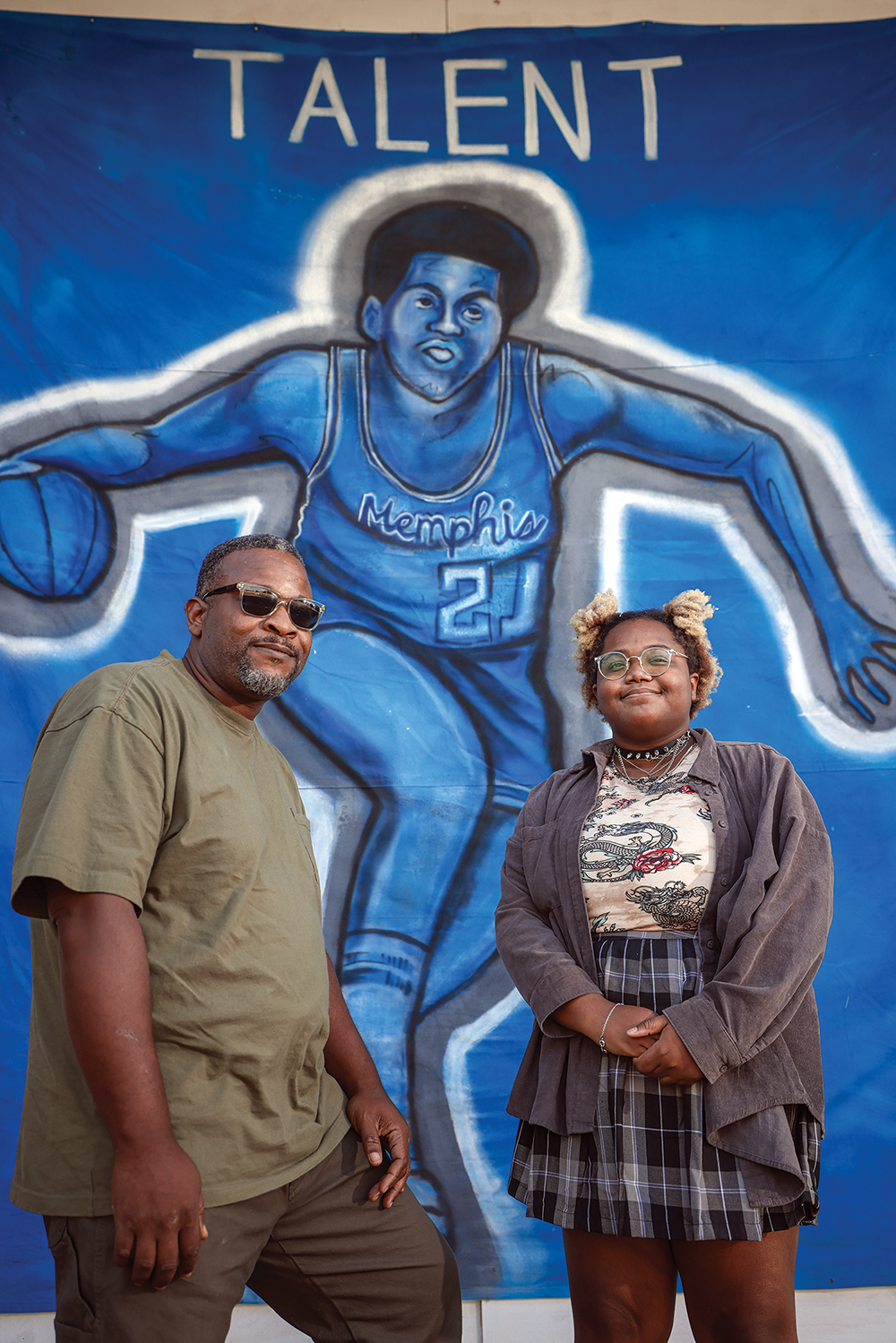The Mid-South Coliseum, Memphis’ first racially integrated facility, once host to concerts, basketball games, graduations, and more, has been closed to the public since 2006. This summer, the Coliseum Coalition, which has been advocating for the Coliseum’s revitalization, commissioned Nisa Williams, a Crosstown High School senior, and her father, Theo James, a textile and graphic artist, to add visual appeal to the landmark’s exterior.
Within two months, Williams and James painted six 15-by-15-foot panels that illustrate Memphis values, with Otis Redding captioned as representing culture, Larry Finch as talent, Justice Constance Baker Motley as justice, a grad in cap and gown as community, Unapologetic as passion, and three children with a globe in their hand as imagination. The father-daughter duo finished the paintings in early August. I recently spoke with them about their project.
Memphis Flyer: How would y’all describe your process?
Nisa Williams: The words were given to us, like prompts, from the coalition. We had a little more freedom of who we wanted to portray. We were given a list of names, and we were also told we could do our own research on what provokes us.
Theo James: After we decided what we were going to do, Nisa and I bashed around the idea of sticking to a graphic style. We didn’t want to go for a photorealistic look because we wanted it to be punchy from a distance.
NW: We just got started doing stuff. I’d start painting in one area, and then he would do another, and it kinda just came together. I think I served the most in concept sketches and making sure that the framework of the murals, as soon as we started painting, was correct.
TJ: Yeah, she was the one that organized how we were going about doing it. I was impressed with what she was capable of doing. There’s some difficulty in translating a screen-size thumbnail into a 15-by-15-foot panel. I think I would’ve had a lot more difficulty without her. I felt that we had an eye-to-eye approach.

What was it like to work together as father and daughter?
TJ: For me, it’s probably the most flattering thing a parent can feel. I didn’t twist Nisa’s arm; she got into art on her own. She started doing little rudimentary things and then it went from there, like people discovering fire to the internet, with her. She has a style already. I know it’s her stuff when I see it, and I’m amazed by it. I’m self-taught. Nisa — she’s taught herself a lot — but she’s had the benefit of good high school art classes. I’ve actually learned a lot from her.
NW: I appreciate that a lot. You can ask him, I’m not really good at receiving compliments. He’s a really talented artist with a notable style. I learned a lot of techniques and more professional and streamlined ways to problem-solve and how to appeal to clients. I think a lot of people underestimate how influential he is in the city, and I think it’s cool that anybody can provoke you through art or make you think about something. That’s a hard thing to do.

What do you hope this project will provoke in onlookers?
NW: We wanted to get people to inquire about the space and what’s happening to it. A lot of the composition has references to the people embodied in the picture. It functions almost as a timeline of the Coliseum.
TJ: Every one of the people portrayed had a piece of history that happened at that location. You can’t live in Memphis without having a story about the Coliseum. You went there to see a show or you went there to graduate. This is a place that has history with a community already connected to it, a place that shouldn’t be demolished. It’s a large space where there’s so much potential. We have to have a place that people can bond over, a place that’s central.
NW: A place to have a collective experience.
TJ: Yeah, I think that’s how a city gets its identity.
